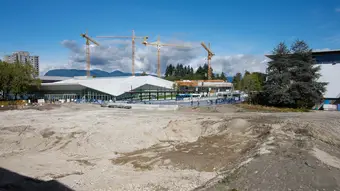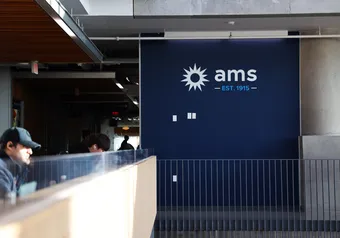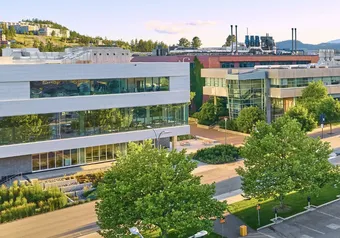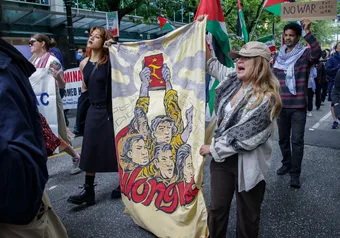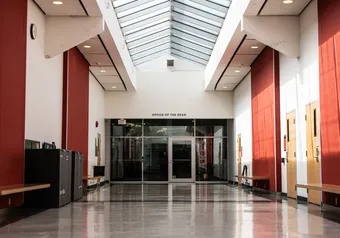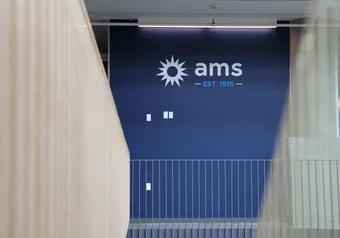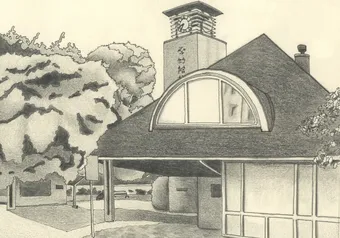Since the original consultation period that ended in September, the AMS has continuously expressed dissatisfaction with how it was consulted by Campus and Community Planning (C+CP) and UBC Properties’ Trust (UBCPT) on the MacInnes Field parkade.
The latest demonstration was at the November 22 AMS Council, where VP Academic and University Affairs Max Holmes asked for a mandate to inform the UBC Board of Governors (BoG) about the society’s opposition to the current plan for the parkade. This stance would be maintained until both sides can agree on an alternative design.
His executive motion was approved by Council, and the AMS has since delivered its submission to the board.
According to Holmes, BoG had given both UBCPT and C+CP “a clear message” in September about working with the AMS on its concerns, but most of them still have yet to be resolved.
“In our last submission, we detailed our disappointment that the consultation was not conducive to implementing AMS feedback ... By refusing to change the entrance and exit of the parkade, the University fails to address the issues of student and pedestrian safety, access to the Nest, traffic build up, and emergency vehicle access,” reads the submission.
“We hope the Board of Governors will continue to prioritize meaningful student consultation on all issues that affect students.”
#AMSCouncil current executive motion brought forward by VPAUA Max Holmes in response to dissatisfaction with the McInnes Parkade proposal: pic.twitter.com/RUxPjs54w5
— Ubyssey News (@UbysseyNews) November 23, 2017
One of the AMS’s major concerns revolves around the parkade’s single entry and exit way in the southeast plaza and its potential impact on pedestrian’s safety.
“It’s a very dense pedestrian area [and] I think most students understand that it is the main access point from the south bus loop into the Nest area,” said Holmes.
“The traffic study where they show you a simulation, of course the people stop perfectly right before the car comes, but that’s not how it works in reality. Some cars are going quicker than others, some pedestrians are running across the area, some pedestrians are looking [at] their phone and are not paying huge attention to the traffic which could quadruple with the addition of the parkade.”
Other concerns from the AMS include the possibility of a breach of contract with Translink due to the increased traffic and congestion in the bus loop area, and the maintenance of adequate access to the Southeast Plaza for emergency services.
John Metras, managing director of infrastructure development, acknowledged this concern and noted that different measures are being integrated into the design to streamline the flow of both pedestrian and vehicle traffic.
In particular, he mentioned landscaping and edge details to clearly mark the areas, as well as pedestrian routes that would provide access to the Nest while completely avoiding the parkade’s exit ways. Both private and public vehicle volumes are also factored in.
“The location of the entry/exit way from the parkade is taken into account as well as traffic flow on University Boulevard,” Metras said. “It’s been specifically located such that it minimizes issues of queuing on the boulevard that may cause disruption to bus service ... so this has been taken into account and will be a very workable solution.”
Holmes: Student consultation has been treated as more of a requirement than a meaningful conversation that can take place. We brought up concerns multiple times. Those concerns were not addressed. #AMSCouncil
— Ubyssey News (@UbysseyNews) November 23, 2017
Still, the current plan is deemed unsatisfactory by the AMS, and the society has proposed alternative designs since the initial consultation with UBC. However, UBCPT has yet to send a detailed response as to why the counter proposals would not work, according to Holmes.
In response, Metras noted that the university has both reviewed some of the recent alternative designs and acted on previous suggestions by making adjustments to the location of the vertical circulation, the SafeWalk cars and the electric vehicle stations.
“We’ve really heard what the AMS has to say and we’re trying to do our best within the overall constraints of the project to make that work,” said Metras.
He also stated that UBC is open to more discussion, but the university is “moving forward with the design for the facility now” in order to keep up with the timeline.
When asked about the AMS’s next step if a compromise could not be reached, Holmes stated that the society would work closely with UBC to manage pedestrian safety and other concerns.
Nonetheless, he reiterated the overall sense of disappointment with the consultation process.
“Most of our most serious concerns have not been addressed adequately, in the AMS’s opinion,” Holmes said.
“UBCPT and C+CP have seen student consultation as a box that they just check off as a meaningless requirement, as opposed to what the BoG clearly communicated to them, [which] was that student consultation is to be meaningful and impactful.”
First online
Share this article


